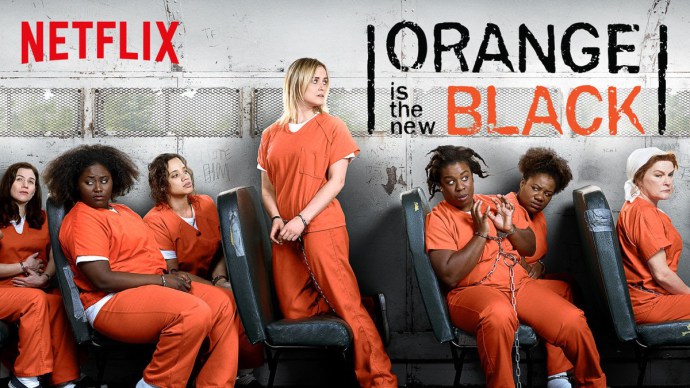After the conclusion of an explosive fifth season, the most recent season of “Orange Is the New Black (OITNB),” released July 27, dealt with the aftermath of the Litchfield prison riot depicted in season five. Season six, picking up soon after these events, brings about some major changes in setting, tone and characters.
The season opens with Suzanne (Uzo Aduba) hallucinating her former cast members in TV shows. Each of them is dealing with a serious problem, but in her imagination Suzanne views them as childlike and cartoonish. The juxtaposition that this creates is confusing and disconcerting, which sets the tone for the rest of the season.
It’s soon revealed that as a result of the riot, all the prisoners were moved from the minimum to the maximum security facility, referred to by the characters as “Max.” The new sets are more harsh and severe; the new characters more so. None of the characters are allowed to return to the minimum facility, which is where the majority of the story took place, so they must be shipped to prisons all over the country. This results in a curtailing of the cast, with regulars like Boo and Maritza nowhere to be found. At the outset of the season, the remaining original characters are sequestered while officials try to determine who led the riot. As the prisoners are either cleared or given additional charges or time, they are released into the prison’s general population.
The result of these changes is a vastly different atmosphere. In keeping with its new, more severe location, the show gets much darker than it was before. The stakes are raised; gangs are introduced, which pits the former occupants of Litchfield Minimum against each other. Former character groups are broken up and shuffled around as the main characters are separated into different, antagonistic cell blocks. The audience watches the old cast get acquainted with the new characters and navigate their new environment, figuring out how to deal with gang politics and their friendships with old friends who have been assigned to a rival block.
After spending five years getting the audience acquainted with its cast, “OITNB” forces viewers to reevaluate their perceptions about its main characters. People that had previously been presented as sympathetic and likeable are shown to be more manipulative and selfish, pushing the audience to question their previously held expectations and opinions. It’s disconcerting and tough to understand, which is a consistent theme this season.
The show became much more topical than it had been in its previous five iterations. In earlier seasons “OITNB” had touched on issues like for-profit prisons. In its latest release, “OITNB” ups the ante, expanding the current social issues it deals with and honing in on them heavily. The show focuses on immigration, the ethics of punishment and discrimination in the justice system, using its subject matter to showcase how these events could affect real people.
What sets “OITNB” apart, however, is its treatment of these issues on such a personal level, providing another perspective to these issues beyond simply the policy arguments addressed in the news. The show melds these overarching social problems with day-to-day human interaction in a way that feels natural and organic. The sixth season of “OITNB” goes beyond what the show had been previously. The show proves it can handle an immense range of topics and emotions and leaves viewers filled with excitement and suspense for the next season.







